Best Help Desk Software for Schools & Universities | HelpSpot

When you think of help desk software, you might not think of K-12 schools and educational institutions at the same time. That’s because it’s often advertised as customer service software — and packed with extras like chatbots and social media widgets — or service desk software for IT teams.
But schools have a lot of email requests to keep up with and manage — especially large universities with multiple campuses and thousands of students. And trying to manage all of those emails in a basic shared inbox tool like Gmail or Microsoft Outlook can lead to frustrations like:
- Struggling to stay on top of incoming emails for different campuses and departments.
- Missed requests when emails get lost in the shuffle.
- Confusion around who is working on which request.
- Unhappy staff because they can’t find requests in a messy inbox and emails are being missed.
- Frustrated students when they don’t hear back or can’t find the information they need.
- Wasted time switching back and forth between the email thread and outside messaging apps trying to communicate with each other.
- No way of monitoring what they are doing well and what needs to be improved.
But help desk software solves those problems because it lets you:
- Consolidate support tickets from different campuses and departments in help desk software.
- Divvy up requests so each staff member knows exactly what they are working on at all times, and no email is overlooked.
- Communicate between staff in each ticket, and all back and forth is logged as a reference for any future support.
- Track support metrics like how many requests are coming in per team, how quickly agents respond, what solutions are working, and what can be improved.
So in this post, we talk about what features to look for when shopping for help desk software and explain how our email management system, HelpSpot, can be tailored to educational institutions of all sizes, from K-12 schools to multi-campus universities.
Looking for a help desk ticketing system to manage requests across campuses without breaking your budget? Reach out to our team today, to see how HelpSpot can be tailored to your support needs and timeline. Get started with our free 21-day trial.
Things to Look for in a Help Desk for Schools & Universities
In the 15+ years we’ve provided email help desk software to educational institutions, the one thing we’ve heard over and over is that software ease of use is critical for smooth adoption. It’s not uncommon for universities to have student workers who have to use the help desk software. So it’s important to find something that efficiently manages incoming emails while being easy to use.
Here are six other things to look for in a help desk:
- Multi-brand support: This lets you link as many email accounts as you need into one help desk. Then you can organize requests by school (school district) or by campus (university) and create dedicated support portals for different departments within those sectors. As a result, customers get faster service because they can get in touch with the staff member they need right away.
Read more: Multi-Brand Help Desk: Manage All of Your Brands with HelpSpot
- Central inbox: Each team can store all incoming requests in one organized dashboard and avoid missed requests.
- Agent queues: This lets each staff member know exactly what they are working on at all times, and what requests still need attention.
- Built-in reporting: This lets you monitor how your teams are performing and what they need to improve support; you can also use these metrics to better manage the needs of the staff and students.
- Extra security: Each team member has their own unique login to eliminate password sharing and prevent data breaches.
- Pay per agent pricing: This allows you to add and pay for agents one at a time. Whereas tiered pricing plans (which is how most help desks sell their product) can force you to upgrade the entire software package just to add one person… and that gets expensive.
HelpSpot’s Help Desk Features for Educational Institutions
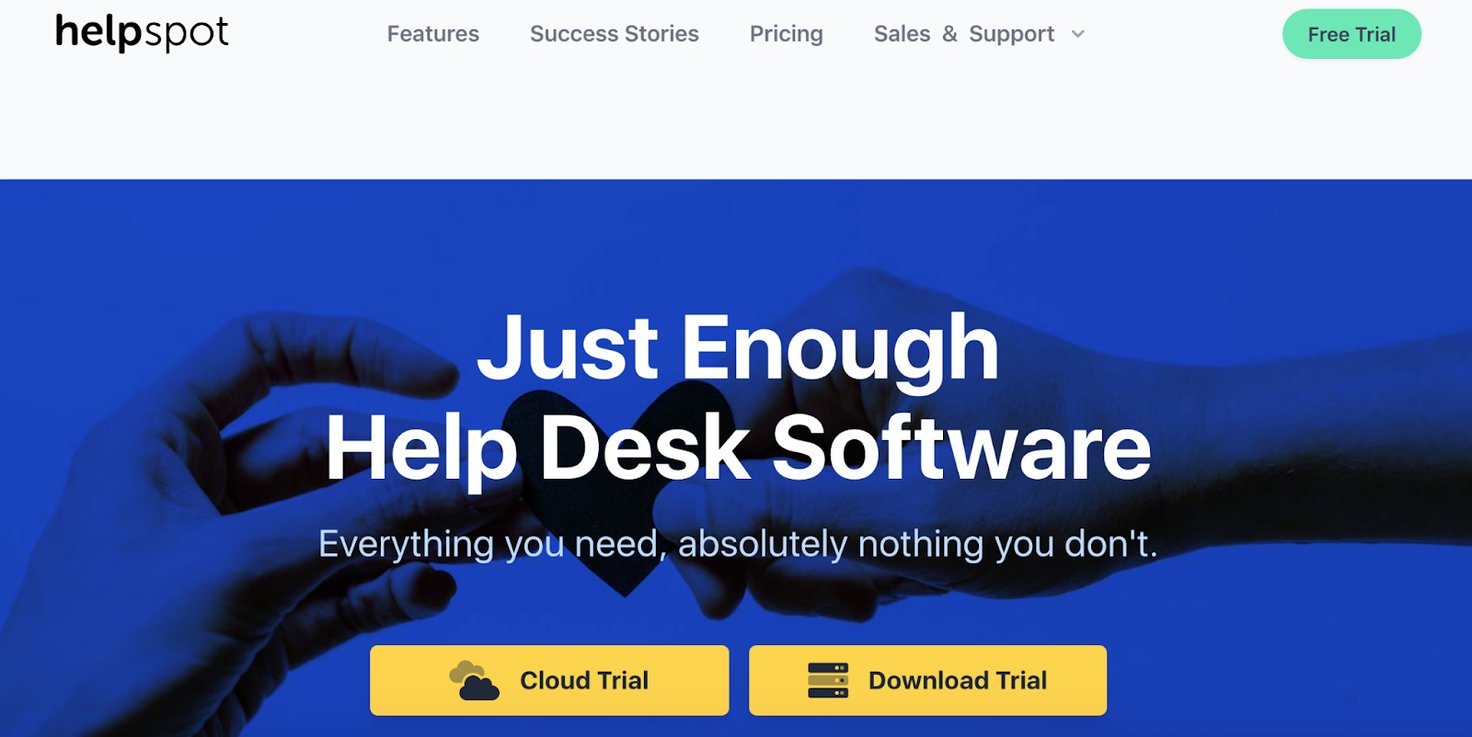
What makes HelpSpot a good help desk solution for schools is our multi-brand functionality. We’re one of the only help desks available that let you:
- Link as many email addresses as you need.
- Create multiple team inboxes.
- Set up individual knowledge bases and self service portals for each mailbox.
- Add custom branding to all of your replies and portals.
You can link all of your organization’s emails, create dedicated portals for all of your different departments, and add corresponding letterheads and colors to team portals in one help desk platform.
Furthermore, HelpSpot is really easy to adopt — a lot of our processes are taken from popular apps (i.e. email, messaging) most people use — and your staff can use it with virtually no training. Plus, our help desk ticketing system is supported by mobile apps (iOS & Android), so your teams can be dealing with complex support issues for multiple locations, right from their mobile devices.
Let’s take a closer look at some of our shared inbox management tools that can make life easier for your support teams.
Improve Ticket Management | Central Inbox & Agent Queues
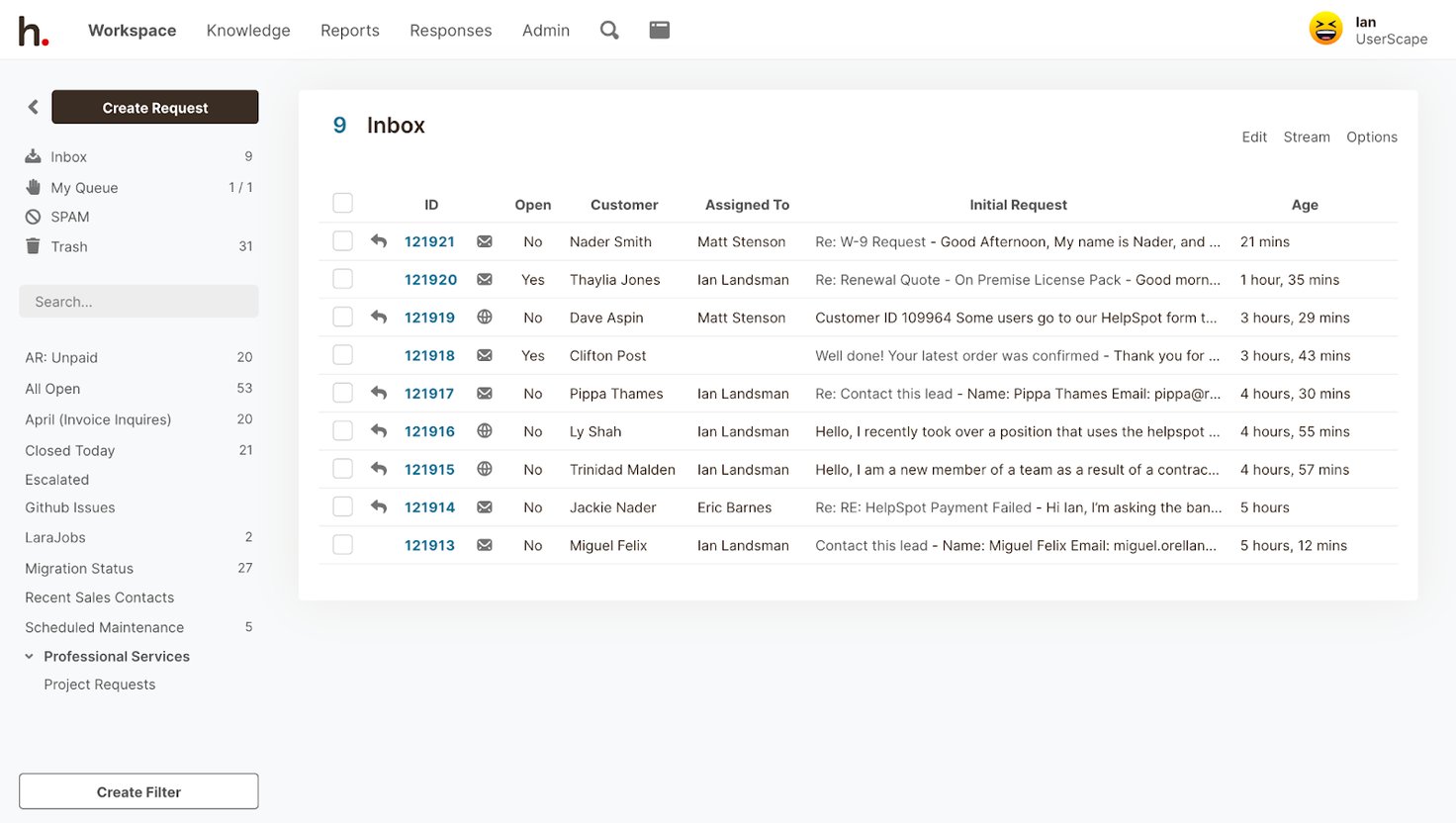
HelpSpot allows you to organize all incoming emails, from as many mailboxes as you need, into a single unified view. This allows management to get an overview of incoming requests for every branch and department.
Then, filters can be used to create custom views of all tickets by allowing admin staff to focus on one department or to track requests around a high-priority topic. So if a server goes down on one campus, you can use filters to track how IT support is handling the resulting issues in real-time.
To streamline support at a department level, you can create separate shared inboxes for each support team. From the team inbox, your agents can choose tickets and pull them into their personal queue (a.k.a. My Queue).
This results in greater agent accountability because each team member can see the tickets they need to resolve and what emails still need attention.
Facilitate Smoother Team Collaboration
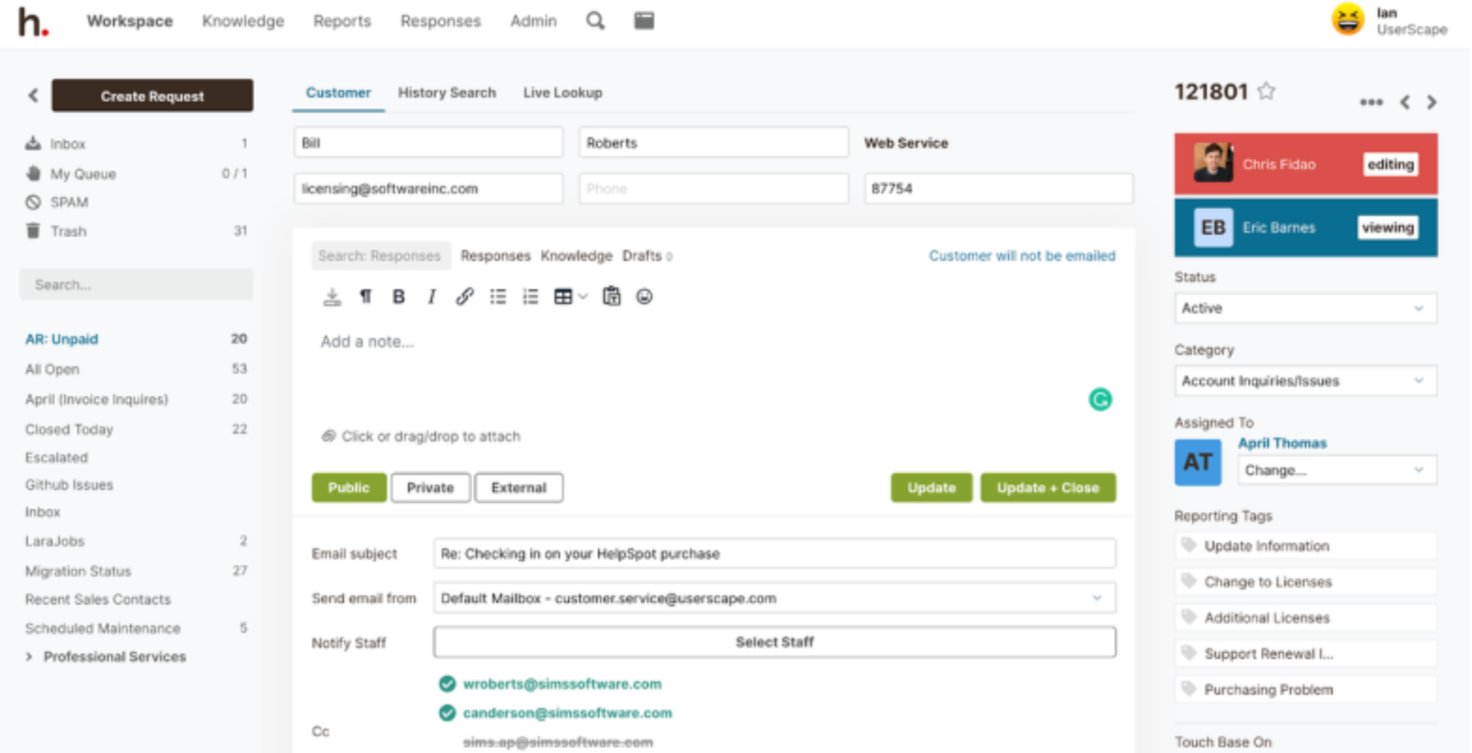
To help your teams avoid miscommunications, HelpSpot comes with collaboration tools like internal notes and conflict detection.
- Internal notes reduces the need for outside messaging apps by allowing your team members to communicate with each other right in the support ticket. Every note is recorded in the history of the ticket as a reference for any future support needs. So, let’s say a support team is trying to resolve all open emails before a school break. Any agent can get up to speed and assist on another staff member’s ticket by simply consulting the comment history.
- Collision detection sends a notification to alert you if another person is working on or viewing the same email you have open. This keeps your team together and eliminates those simple blunders, like when two people respond to the same request
Read more: The Best Team Inbox Management Solution
Help Your Teams Work More Productively | Performance Features
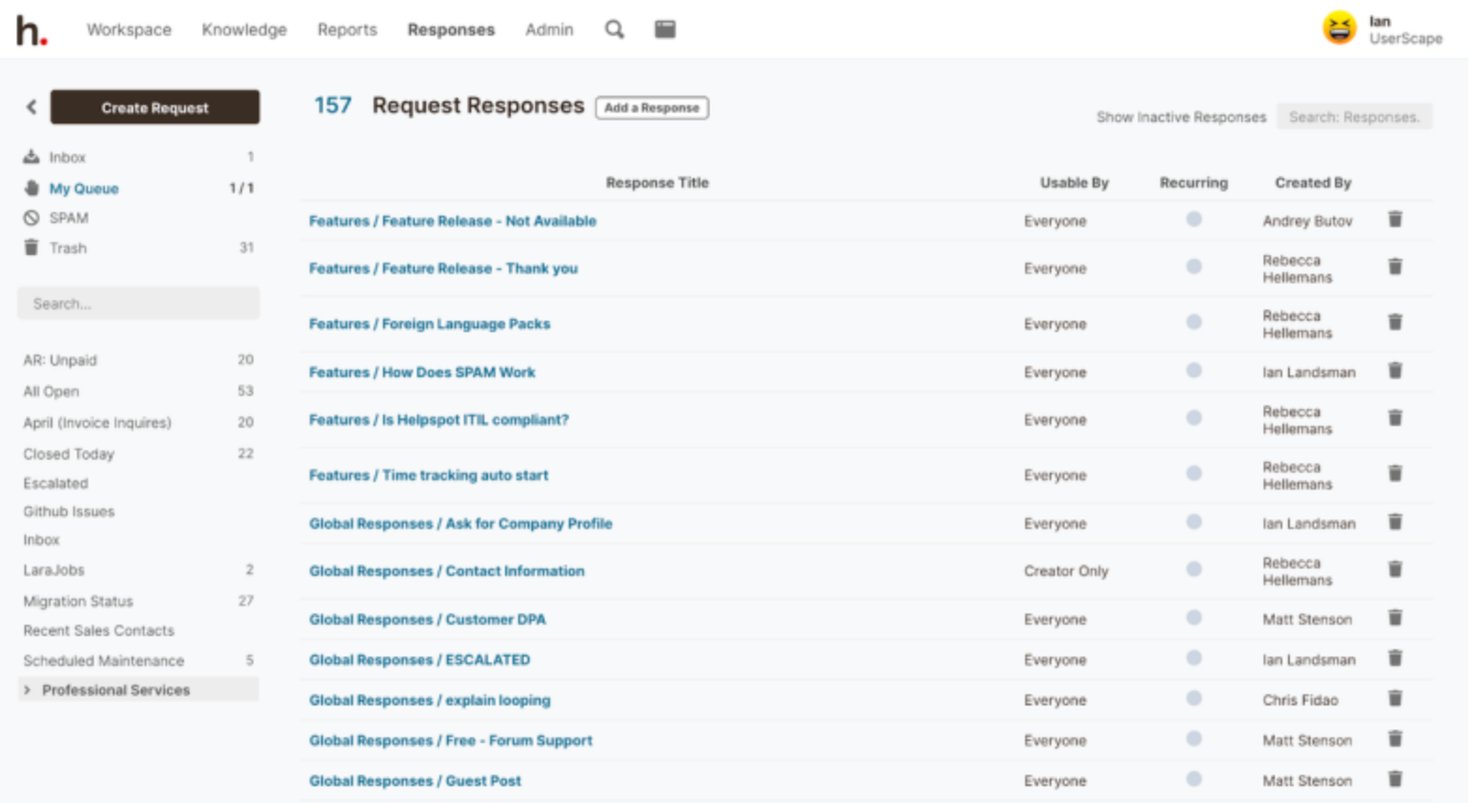
HelpSpot comes with a number of tools to increase productivity, among them are:
- Customizable templates for quick-fire responses.
- A help desk knowledge base (with self-service portals) to store in-depth articles.
- Automation rules and triggers to eliminate repetitive tasks.
Customizable Templates
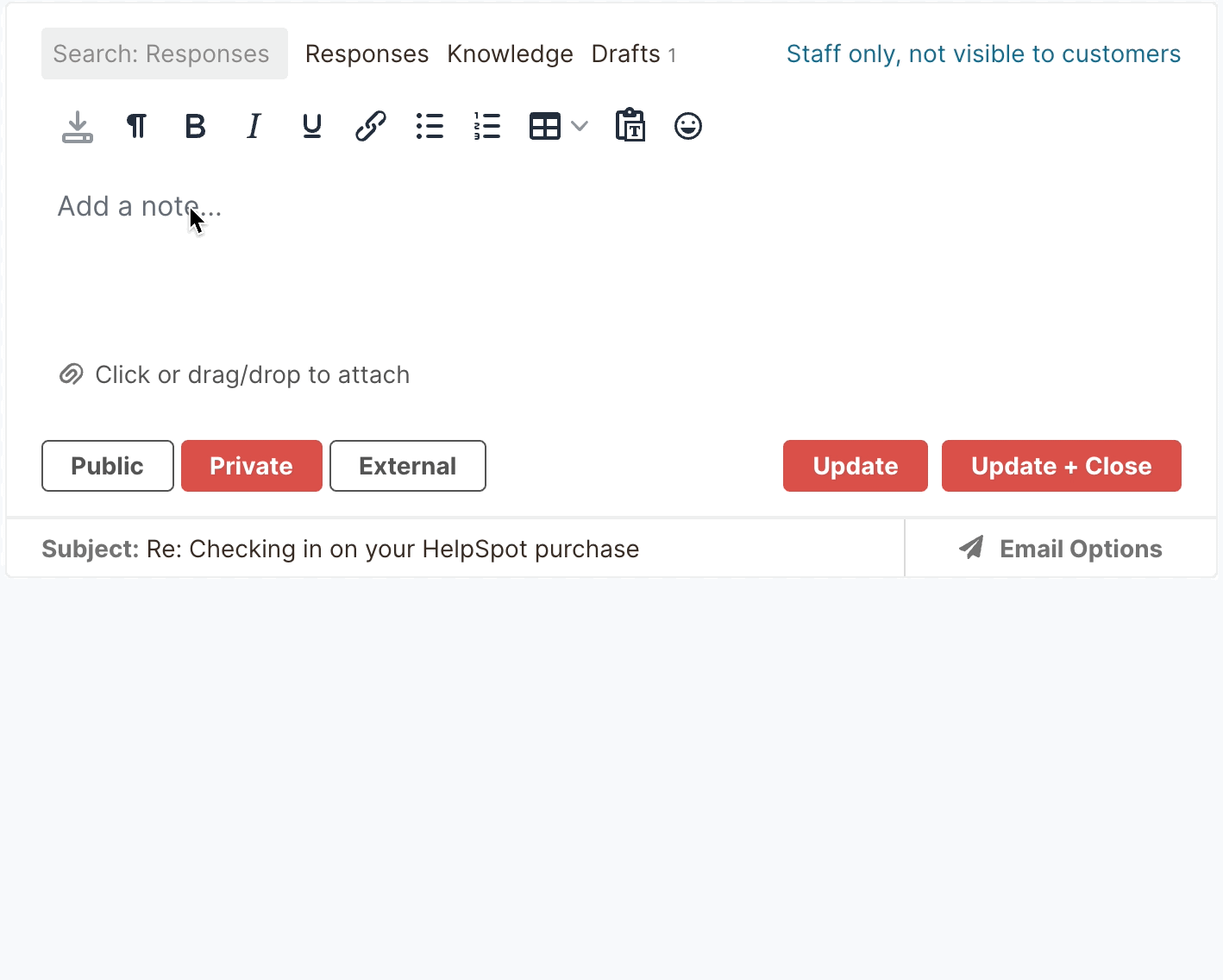
HelpSpot lets you save a library of email templates that can quickly be pulled into your replies. Templates can be easily personalized for different recipients, and they help speed up response times, as staff members don’t have to sit and type out each and every email reply.
HelpSpot’s email templating tool even lets you modify the template design, so you can add custom branding to coincide with the corresponding branch or department.
Plus, teams can add custom signatures to templates to give their replies a more personal touch. This lets your teams focus on providing the best support — with every aspect of design covered.
Knowledge Base & Self-Service Customer Portals
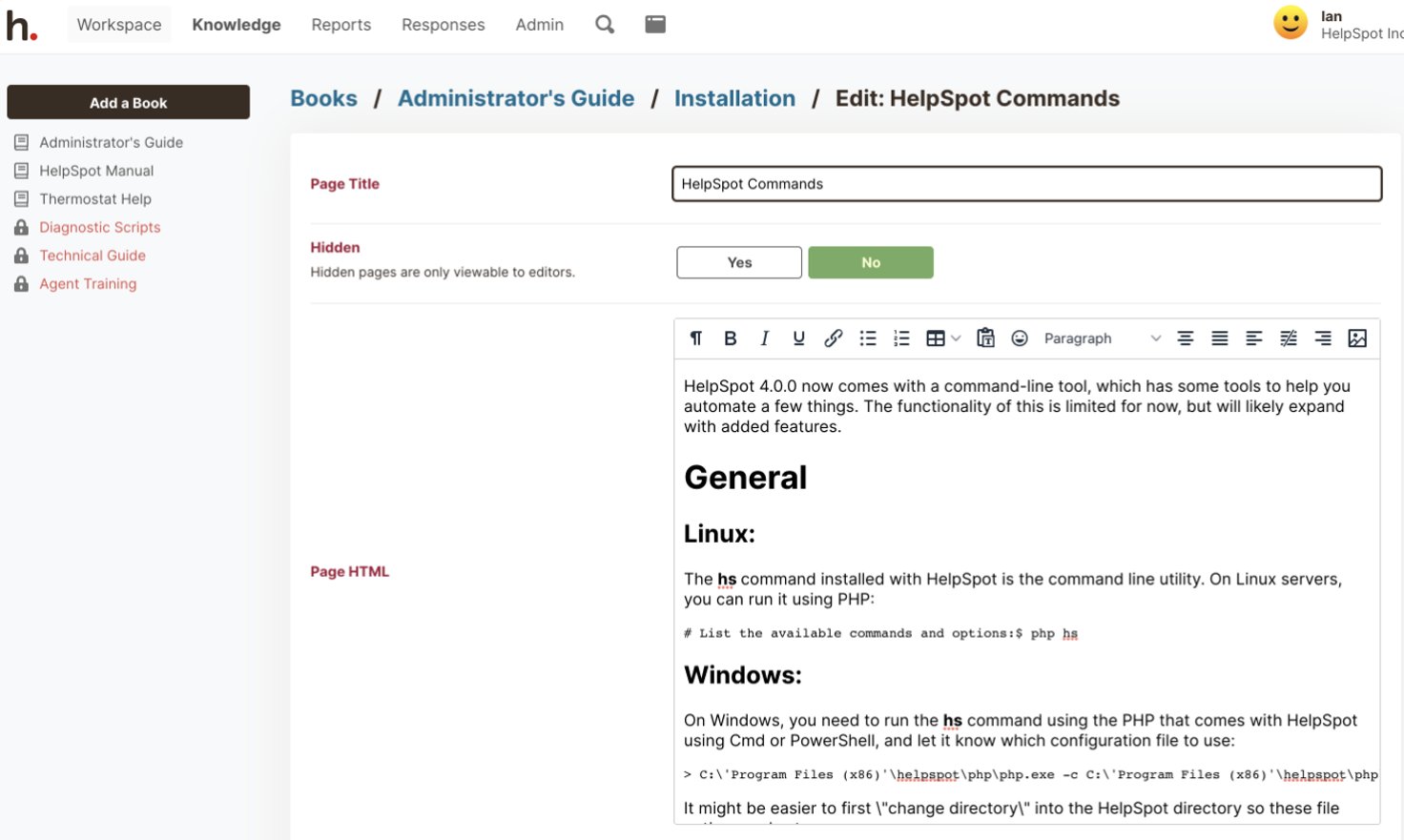
HelpSpot’s knowledge base feature lets you store articles and FAQs on the platform. Agents can pull documentation from the knowledge base into email replies.
As a result, your teams can quickly send in-depth troubleshooting information for complex issues with just a couple of clicks, speeding up their overall response time.
Furthermore, you can set your knowledge base to “public.” This allows you to publish relevant articles on a self-service portal for your end users. Users can search and find solutions to their own issues — which significantly reduces your support team’s workload. If they can’t find what they need in the public articles, they can submit a support request right on the site.
HelpSpot also tracks what your customers are searching for in your online portal: Searches that return no results are particularly useful as they highlight articles your customers want to read, and what your team should write.
Automation Rules & Triggers
Automation rules and triggers are a great time saver because they can automate repetitive tasks for your support staff by training the software to complete them for you.
Let’s say the department handling tuition wants to ensure requests around payment deadlines are escalated. A simple trigger can be set up to detect certain words and phrases in an email like “payment,” “loans” or “financial aid.”
Once a ticket is triggered, it is automatically assigned to the right person — eliminating the time it would take to dig through the inbox and find them.
Use Performance Metrics to Make Informed Management Decisions | Reporting Features
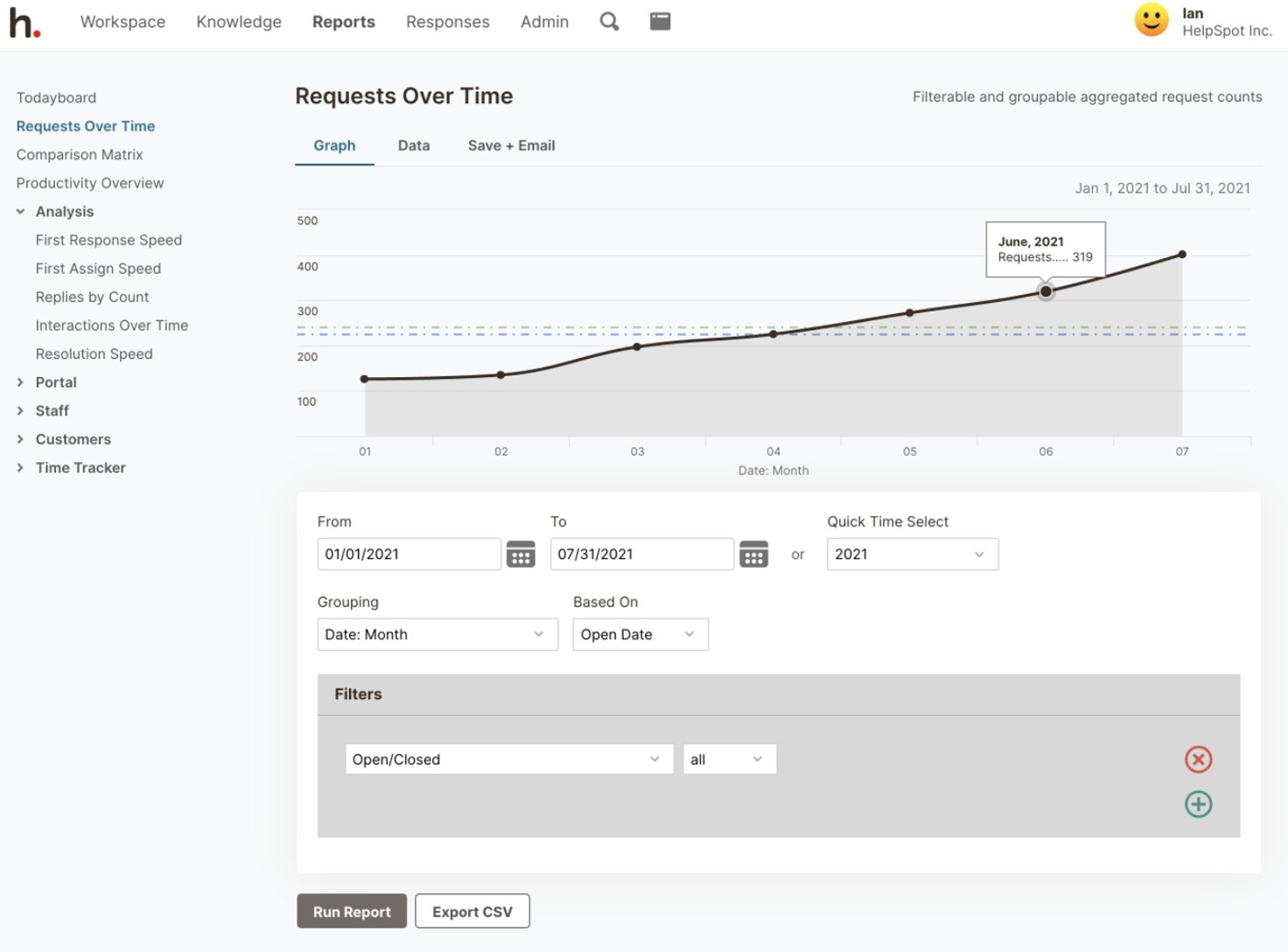
To better manage team workload, agent productivity, and faculty/student issues, HelpSpot’s reporting functionality tracks a number of performance metrics right out of the box, like:
- Average number of requests per person (or per team).
- Average assignment and resolution speed.
Each metric can be customized for different timeframes and to focus on specific divisions of your educational institution. So if the beginning of the academic year has been chaotic with onboarding new students (i.e. term scheduling, housing, maintenance, IT support), you can use HelpSpot to track the data in real-time, or later isolate team and individual performances to see how processes can be improved.
Furthermore, you can use HelpSpot to:
- Build reports using custom graphs and tables.
- Export all data in a CSV.
- Deliver reports to any email address lists, at any frequency.
Plus, you can adjust all reporting to reflect the business hours of your team — so an email submitted on a Friday that is assigned on Monday doesn’t appear as taking 72 hours for the first response.
Read more: The Complete Guide to Customer Service Reporting
Keeping Your Data Secure | Built-in Authentication
With multiple people working out of the same inbox, sharing passwords becomes a liability. HelpSpot prioritizes security by providing its own built-in authentication system.
That said, if you need single sign-on (SSO) support, with HelpSpot, you can connect any SAML based authentication service. To ensure the safety of your data, our SAML authentication system is actively tested with Office365/Azure and Google Suite.
Add Features & Agents When You Need Them | Fully Customizable
Our help desk software is available in both cloud-based and self-hosted options, and to simplify adoption and reduce onboarding time, we created HelpSpot with only the necessary features to deal with high volumes of email requests.
However, many teams choose to connect their help desk with their existing tech stack, so for this reason, our help desk is fully customizable via open-source API and Zapier connection. This means you can easily integrate our customer support software with other tools in your workflows at no extra cost. For example, if your IT support team needs a tool like asset management for more IT service management (ITSM) functionality, this can be done with ease.
HelpSpot also uses a simple pricing model: You get all of our help desk system features and you only pay for the staff members you need.
So if you need to add a few people — even for temporary seasonal work — you can do this without being forced into a more expensive price plan that can strain your budget. This applies to both versions of our software: cloud-based and on-premise.
Shopping for on-premise help desk software? This guide compares the best self-hosted help desk solutions.
Try HelpSpot’s Help Desk Software for Schools for Free
When researching the best help desk software for a university or school district, you should look for a software solution that, in addition to being user-friendly, offers multi-brand support and flexible pricing.
Many help desk providers on the market charge extra for unlimited mailboxes or self-service portals. This caps how many separate branches can be supported from one help desk software. In contrast, HelpSpot’s largest multi-brand client supports 500+ departments, with 500+ mailboxes, and 50+ self-service portals from a single software deployment — at no extra cost.
And with HelpSpot’s pay-per-agent pricing model, educational institutions have the flexibility to add new staff one agent at a time. So, even midway through a budget year when funds are tight, you simply pay for the team members you need.
Get in touch with our customer experience team today to see how HelpSpot’s help desk software can be tailored to each of your support departments and kick off a free 21-day trial.

